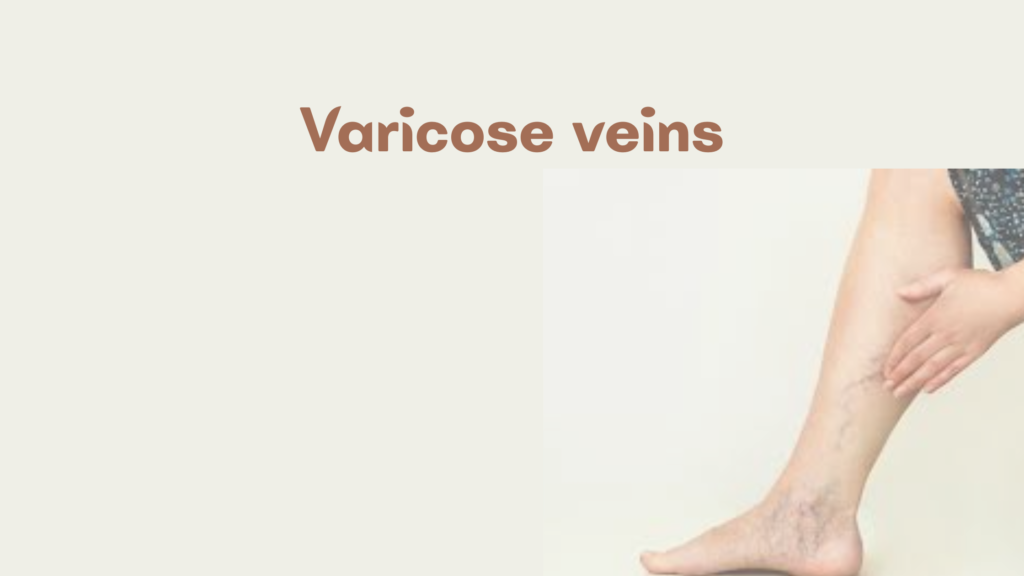Varicose veins are enlarged, twisted veins that are commonly found in the legs and feet. They occur when the valves in the veins that help blood flow toward the heart become weak or damaged, causing blood to pool in the veins.
Causes
- Weak or damaged vein valves
- Genetics (family history)
- Pregnancy
- Obesity
- Prolonged standing or sitting
- Age-related wear and tear on veins
Symptoms
- Bulging, blue or dark purple veins
- Aching, heavy, or uncomfortable legs
- Swelling in the lower legs and ankles
- Muscle cramping and throbbing
- Itching around the veins
- Skin discoloration (in severe cases)
Complications (rare)
- Ulcers (especially near the ankles)
- Blood clots (superficial thrombophlebitis or deep vein thrombosis)
- Bleeding from ruptured veins
Treatment Options
Lifestyle Changes
- Exercise regularly
- Elevate your legs
- Avoid long periods of standing or sitting
- Wear compression stockings
- Maintain a healthy weight
Medical Procedures
- Sclerotherapy – injection of a solution that scars and closes the vein
- Laser therapy – uses light energy to close off veins
- Radiofrequency or laser ablation – heat is used to close off the vein
- Vein stripping – surgical removal of large veins
- Ambulatory phlebectomy – small sections of vein are removed through tiny skin punctures
- Endoscopic vein surgery – used in severe cases
